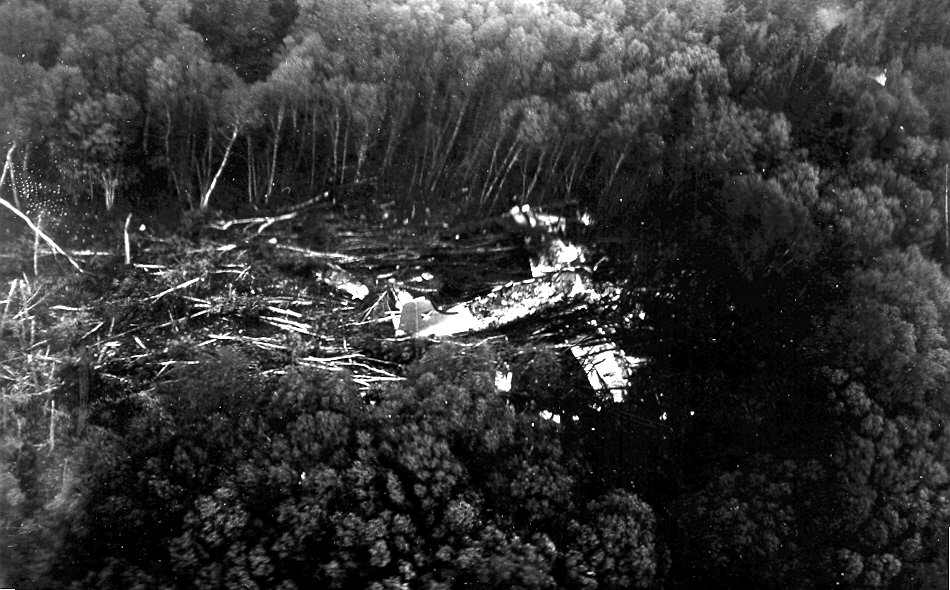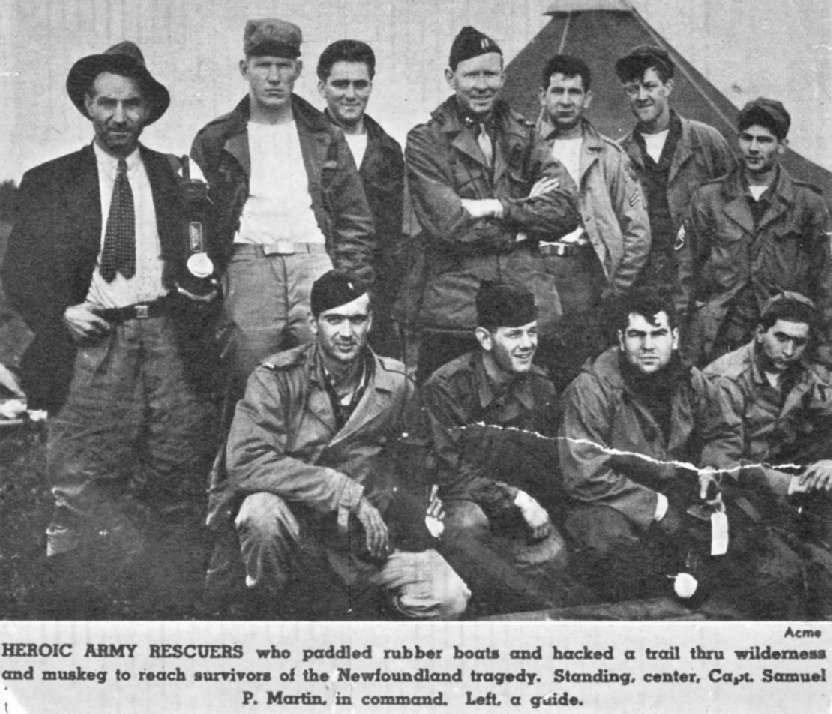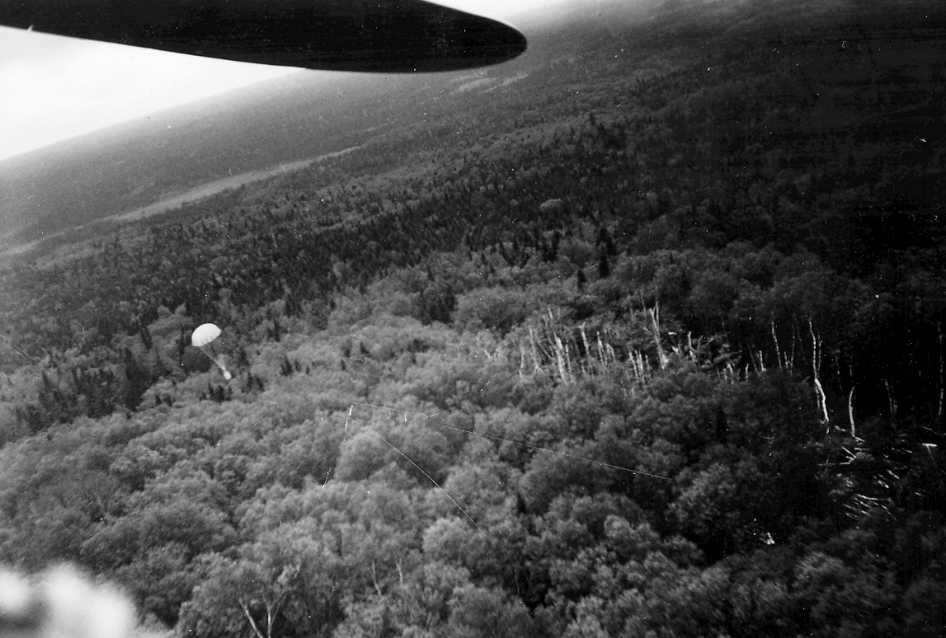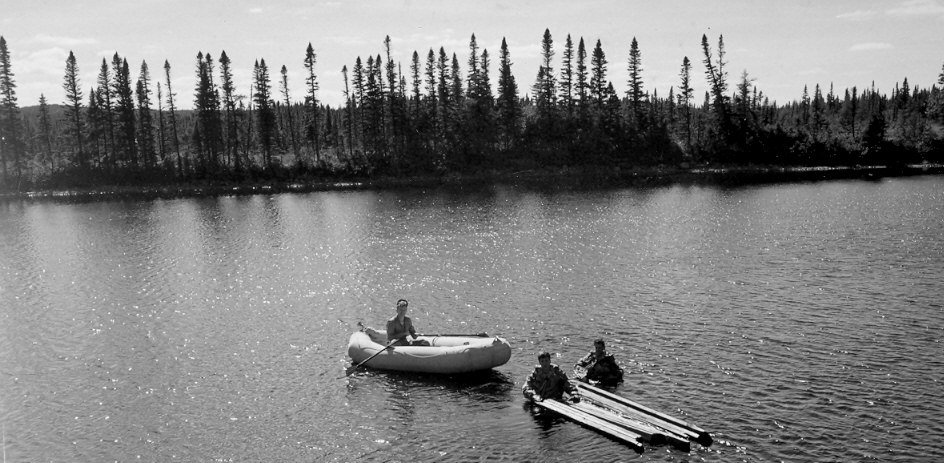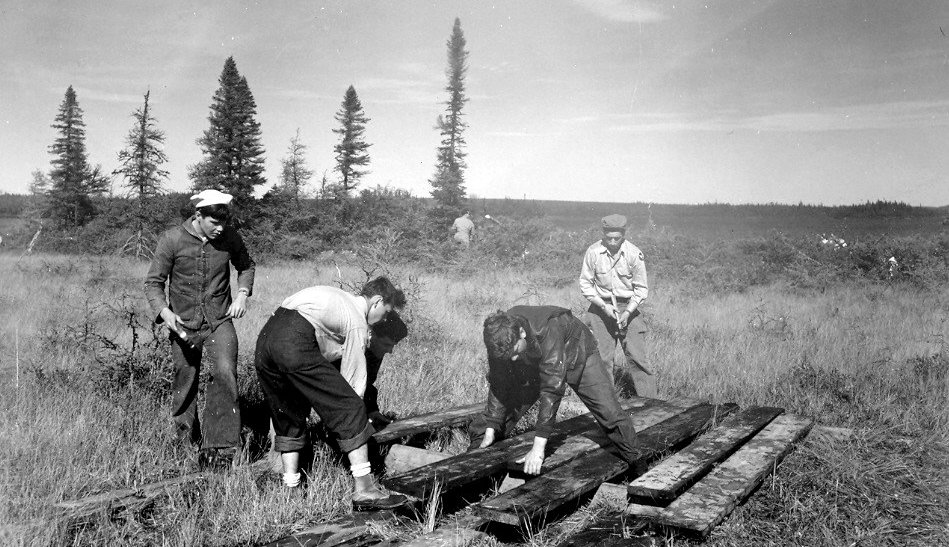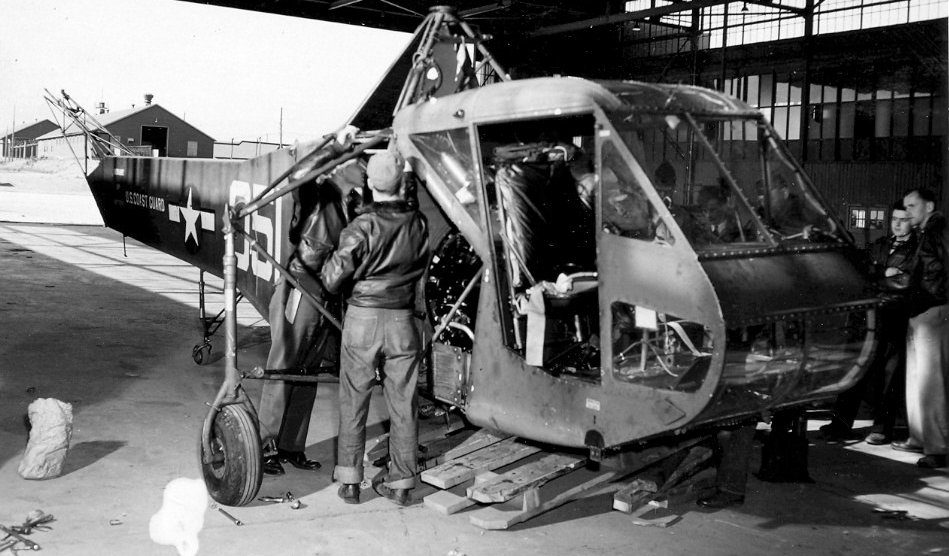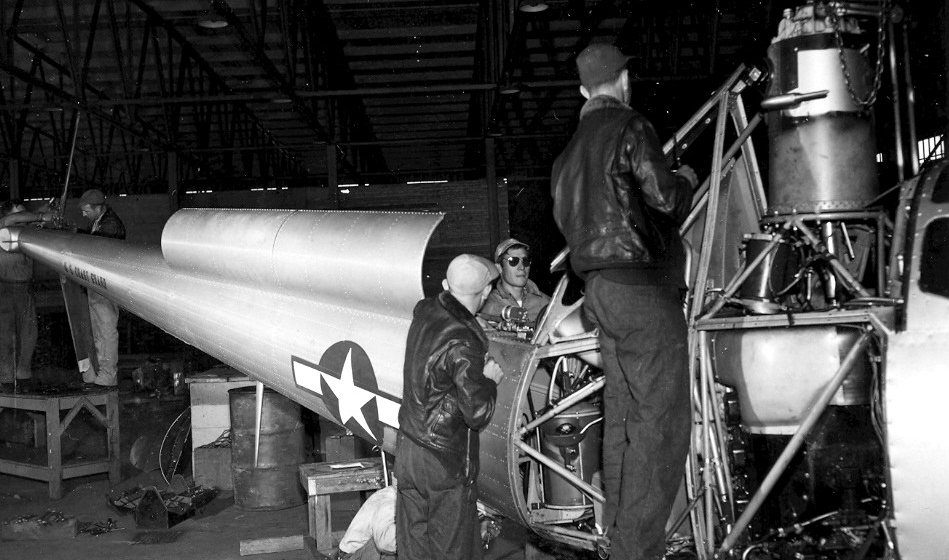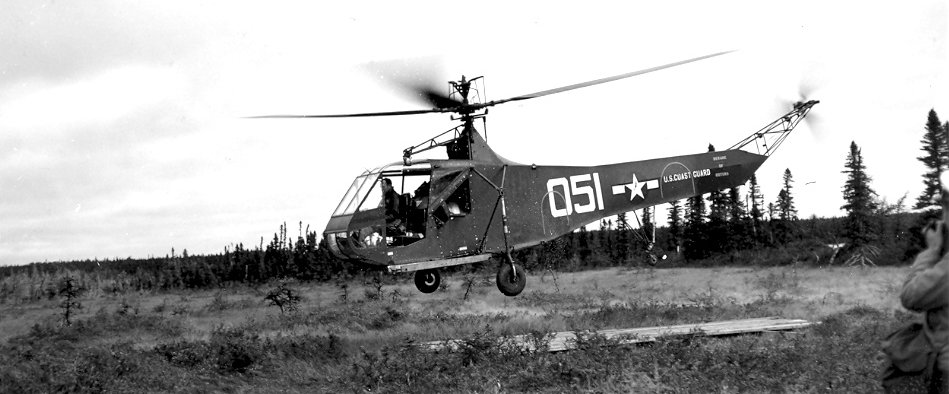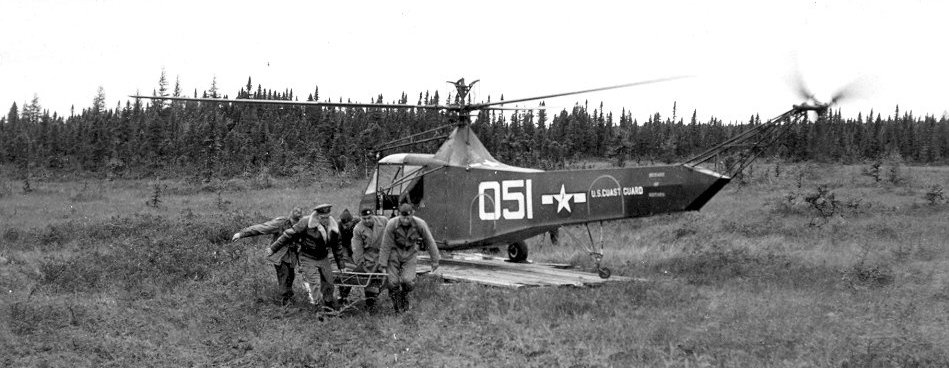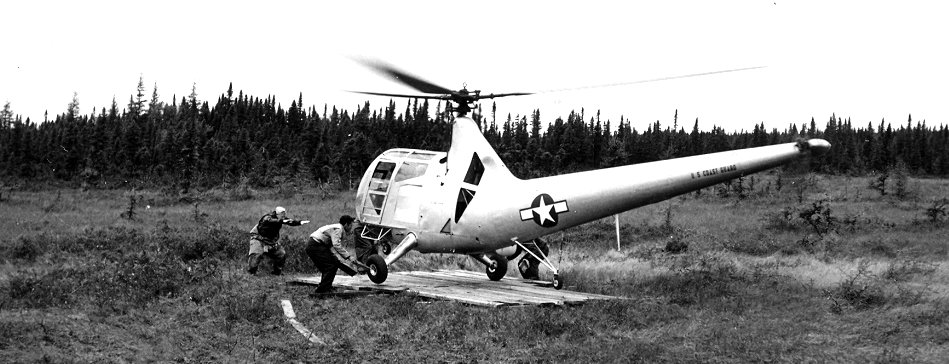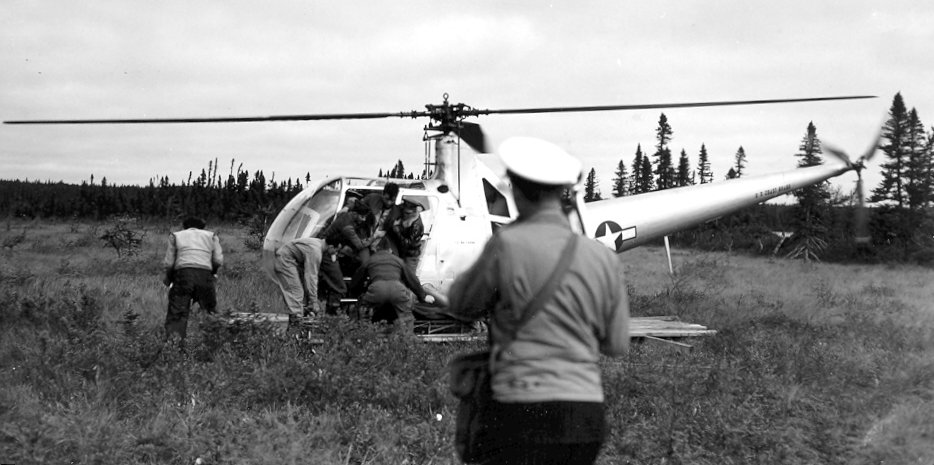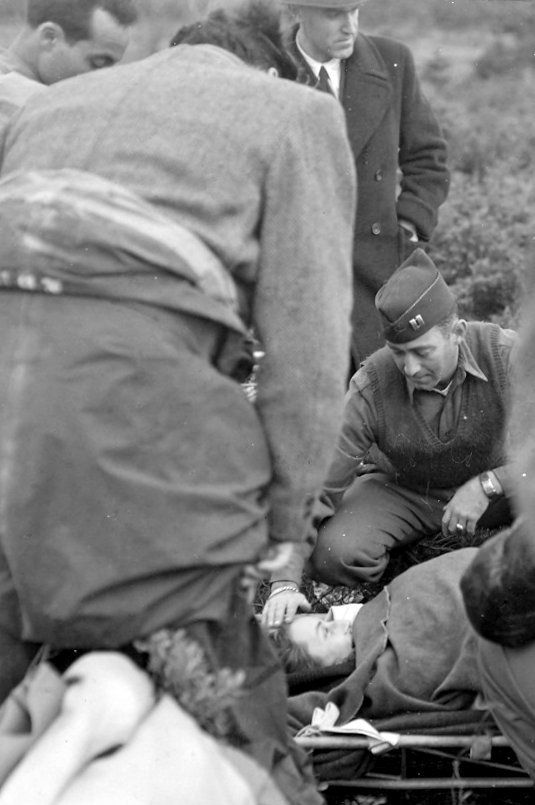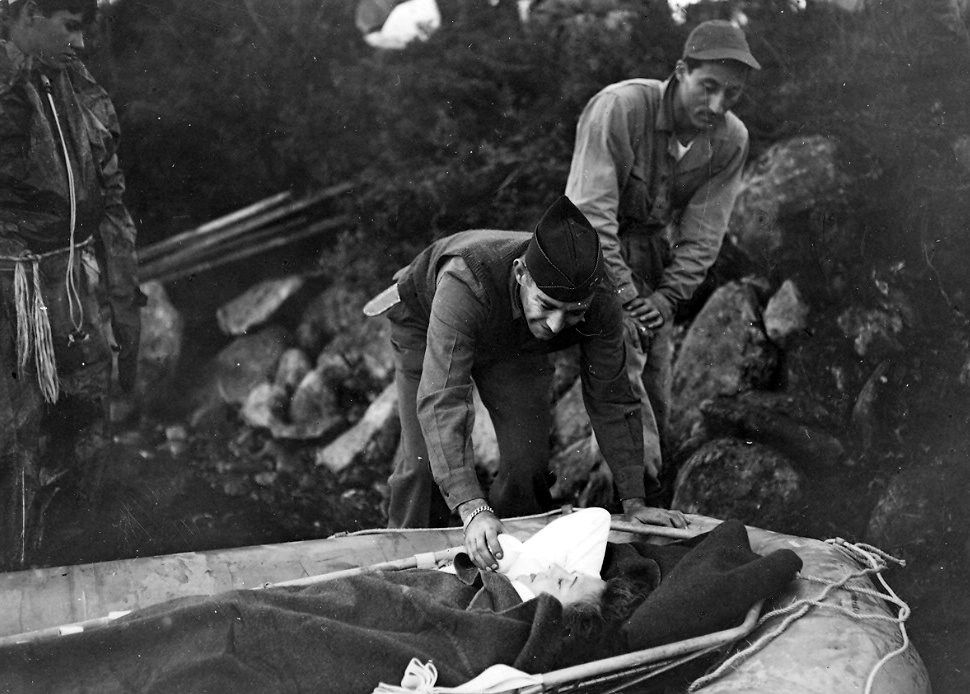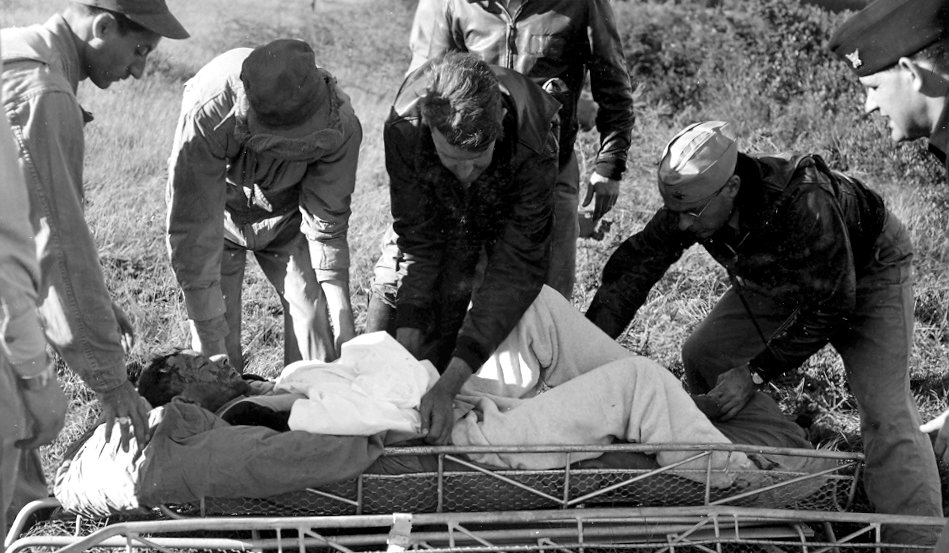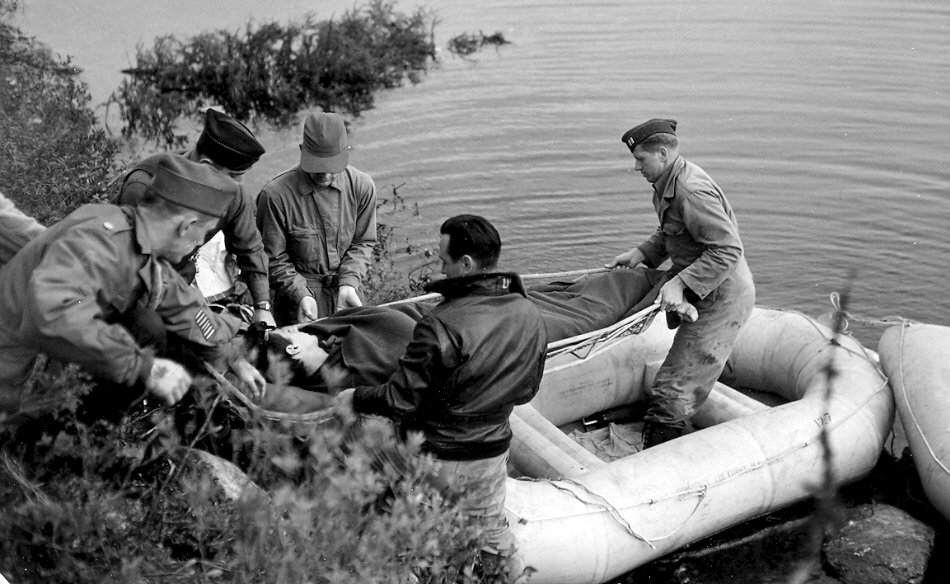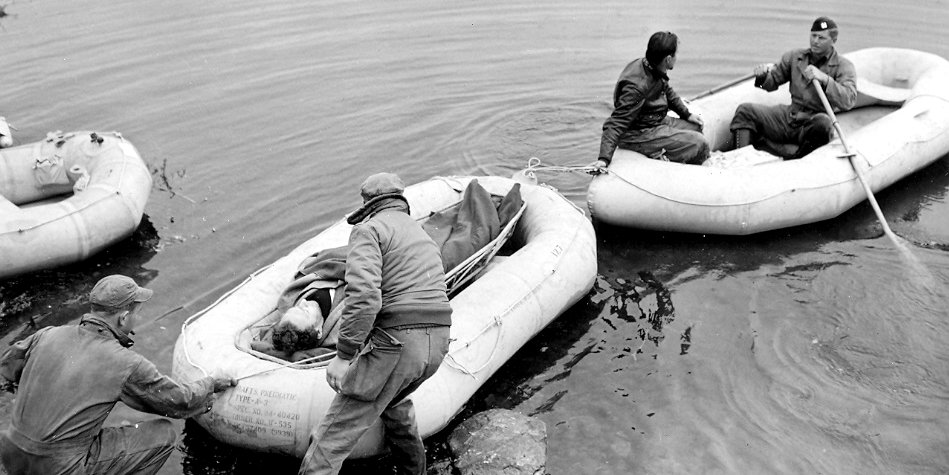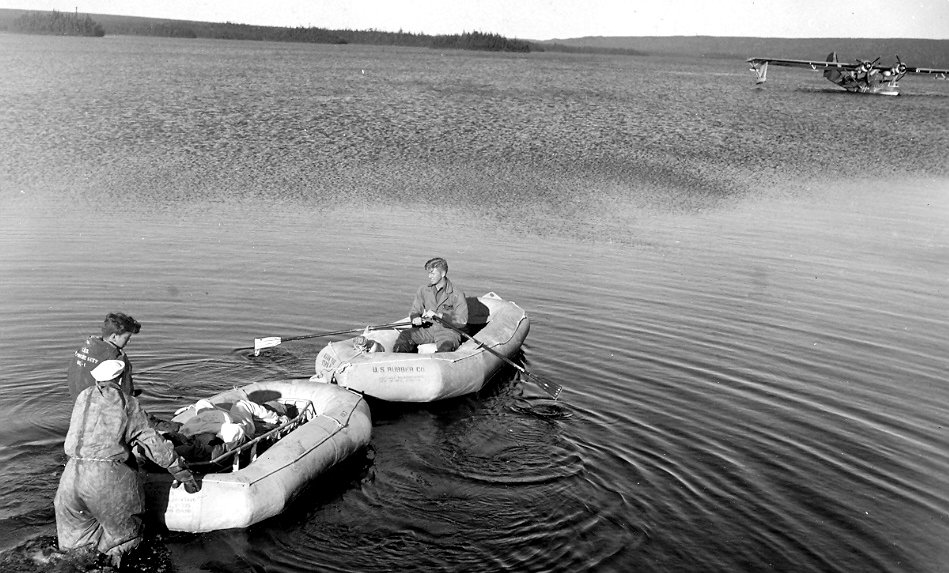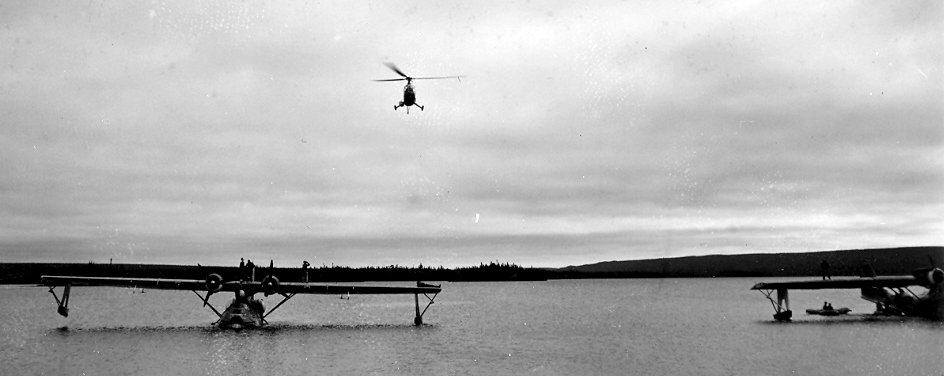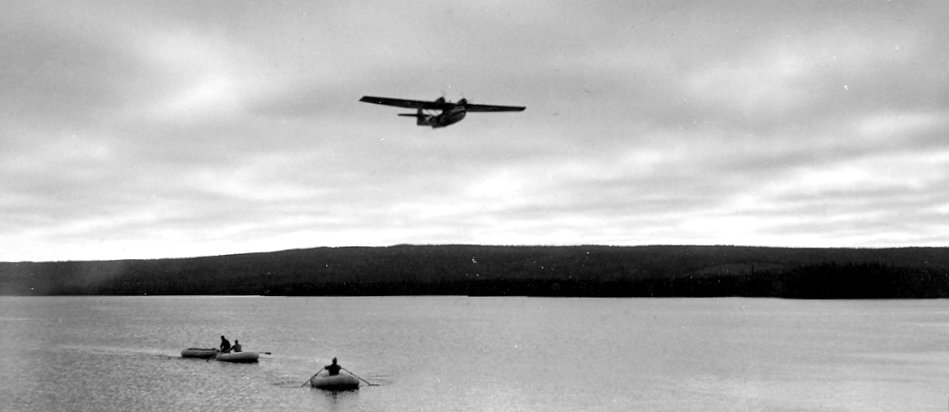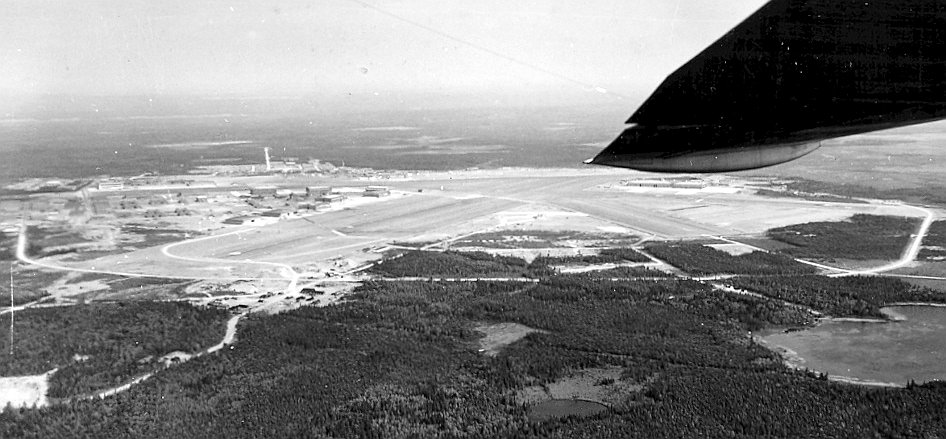|
TRAGEDY AND RESCUE: Oscar Oscar - Charlie Baker George Sabena Airlines DC-4 Crash Near Gander Lake, Newfoundland September 1946 By
Lieutenant Colonel Ted Allan Morris, United
States Air Force (Retired)
|
| From its very beginning, a primary
function of the Coast Guard has been the rescue of
those in peril. Just one year after the end
of World War II the United States Coast Guard
found itself reduced to less than 35,000
personnel and with greatly increased
responsibilities around the
world. One area of
responsibility was the North Atlantic Ocean.
Some of these responsibilities included ships and
crews manning almost a dozen Ocean Weather
Stations in the Atlantic Ocean in some of the
world?s worst weather. Operating the
electronic LOng RAnge Navigation (LORAN) system
from isolate land based stations in Newfoundland,
Labrador and Greenland. The
International Ice Patrol using both ships and
aircraft that had begun in 1912 following the loss
of RMS Titanic.
To command and oversee these functions, the North Atlantic Ocean Patrol (NORLANTOPAT) was formed. One unit of NORLANTOPAT was the Coast Guard Air Detachment based at the U.S. Naval Air Station, Argentia, Newfoundland. Aircraft assigned were two PB-1G (B-17G), numbers 77247 and 77249. These aircraft were used primarily with the International Ice Patrol tasked with the search for and tracking of ice bergs from the Greenland Ice Cap which drifted into the Atlantic Ocean shipping lanes. Other aircraft assigned were two PBY-5A amphibians, numbers 34008 and 48314, which provided backup Ice Patrol missions and airborne supply support of the isolated LORAN stations. All of these aircraft were used for Search and Rescue missions when the need arose. On 18 September 1946 the Belgian Sabena Airways four engine DC-4 aircraft OO-CBG with forty-four persons on board crossed the Atlantic and was scheduled to land to refuel at Gander Airport in Northeast Newfoundland. Air Traffic Control lost contact with the airliner. After determining it had not landed elsewhere, ATC declared an emergency and contacted the Coast Guard Air Detachment Operations Center for assistance. The Coast Guard Air Detachment, Argentia, launched PB-1G (B-17G) 77247 and PBY 5As 34008 and 48314 to begin a wide area search. PB-1G 77247, under command of LT(jg) Charles E. MacDowell, searched an area at sea where reports had been received of a possible crash. PBY-5A 34008, under command of LCDR James N. Schrader, and 48314, commanded by LCDR Larry L. Davis, searched inland, centering on Gander Airport. An inbound TWA flight located the possible crash site about 20 miles Southwest of Gander and remained overhead until PBY-5A 48314 reached the scene and confirmed it was Sabena OO-CBG, and that indeed there were survivors. The area was heavily wooded and the ground proved to be a very large bog. As the aircraft could not land at the crash site, emergency aid supplies were dropped by parachute to the survivors. Plans were formulated to rescue the survivors. A PBY-5A, with a US Army Medical Team under the command of Captain Samuel P. Martin from Ft. McAndrew at Argentia, was landed on Dead Wolf Pond, a lake about one and a half miles long located five miles southeast of the crash site. With experienced woodsman from Gander Airport personnel, Dr Martin and the medical team began the hazardous trip down a river known as Dead Wolf Brook from the lake to an area near the crash site. Dr. Martin?s team then made their way by foot through the boggy area to the DC-4 and the survivors. Dr. Martin stated that many of the severely injured would not survive the rugged overland up-river trip and that some other way had to be found to extract the survivors and rescuers. The Coast Guard decided to use helicopters to carry out survivors. The nearest helicopters were located at the Coast Guard Air Stations, Brooklyn, NY and Elizabeth City, NC. In fact, these were the ONLY helicopters still operating in the USCG at the time. Helicopters were just out of their infancy in 1946, moving into the kindergarten stage. This would be their first large scale rescue which helped prove the helicopters amazing capabilities. The fabric covered HNS-1 39051 and the metal clad HOS-1 23470 were disassembled. Along with the pilots, maintenance personnel and spare parts, the disassembled helicopters were loaded onto two USAAF C-54 aircraft for the flight to Gander Airport. They were reassembled and tested. This part of the operation took less than forty-eight hours. Meanwhile, the two PBY-5As dropped more supplies including tents, medical supplies and lumber at both the crash site and Gander Lake. The lumber was used to construct platforms for the tents and for the helicopters to land upon so they would not sink into the bog. With the helicopters reassembled at Gander Airport and flown to the crash site, pilots CDR Frank Erickson, LCDR Stewart Graham, LT Walter Bolton and LT August Kleisch, rescued the survivors by making repeated flights between the crash site and Gander Lake, a distance of about 12 miles. The eighteen survivors were placed in wire stokes litters attached to the outside of the HNS-1 helicopter and inside the hastily modified HOS-1, then flown one at a time to Wolf Lake where they were further stabilized by the US Army Medics. The survivors were then loaded into life rafts, towed out to the PBY-5A on the lake, taken aboard the amphibian and flown to Gander Airport where they received more detailed medical care. The helicopters and PBY-5As made numerous trips before all eighteen survivors were rescued and flown to Gander Airport. The rescuers buried the twenty-six fatalities there at the crash site, now officially known as St. Martin in the Woods in honor of Captain Samuel P. Martin, M.D., U.S. Army Medical Corp, who had so tirelessly tended to the injured. A memorial has been erected at the site with plaques listing the survivors and fatalities, and honoring Captain Martin. After all the survivors were removed and the fatalities buried, the Coast Guard PBY-5As flew out all the rescuers and some of the materials used in the rescue. The HNS-1 39051 was transferred to the Air Detachment at Argentia and HOS-1 23470 was returned to the Coast Guard Air Station, Brooklyn, NY. |
|
Additional resources: USCG's biography of CMDR Stewart Graham, who supervised the movement of the HNS-1 to Gander, and flew it during the rescue operations. Time Magazine's article on the crash and rescue effort. Photos of the crash site, memorial, and grave yard taken in 2003 (on GanderOurTown.ca). Here's a sample: 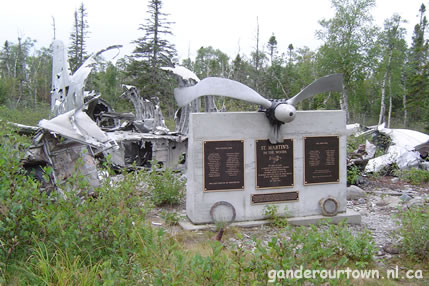 The Crash Site can be seen clearly on Google Earth at 48o41'30"N 54o55'20"W 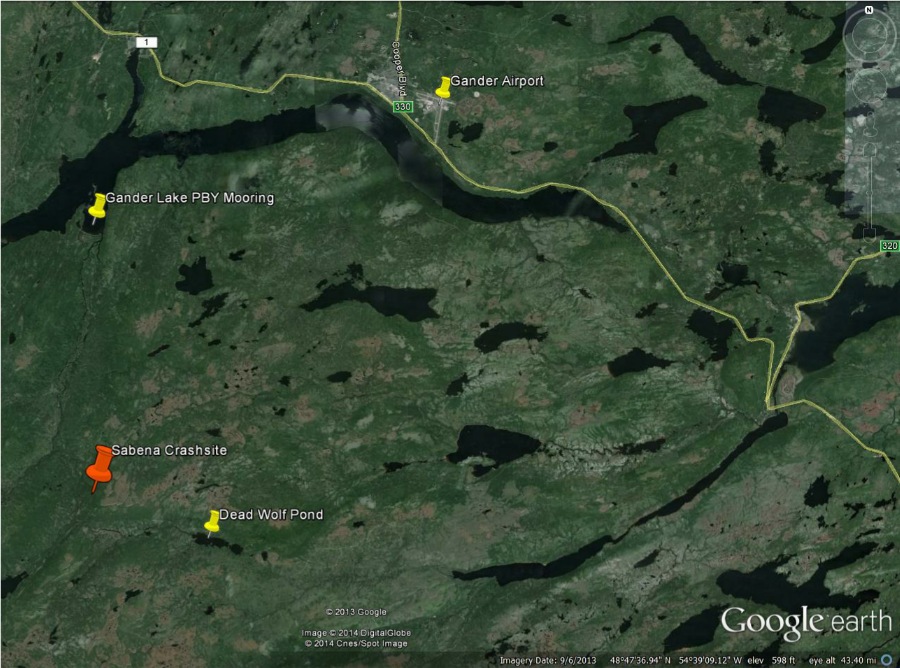 |
| Many thanks to Fernand Van de Plas of
Belguim for allowing the use of his excellent
drawing of Sabena OO-CBG:
Narrative: The
DC-4 was on a flight from Brussels to New York with
intermediate stops at Shannon and Gander. The
aircraft crashed in bad weather. Reportedly, the
pilot attempted to carry out a visual approach to
Gander by trying to descend below the clouds. Since
the cloud base was about ground level, the airplane
descended into trees. It crashed and broke up.
PROBABLE CAUSE: "The pilot did not carry out the
appropriate approach procedure for landing in bad
weather conditions."
The photos
below depict some of the operations
BELOW: Site of the
Sabena Airways DC-4 OO-CBG crash, 18 September,
1946 near Gander Lake, Newfoundland.
From: Bill Goulding [mailto:billgoulding@nf.sympatico.ca] 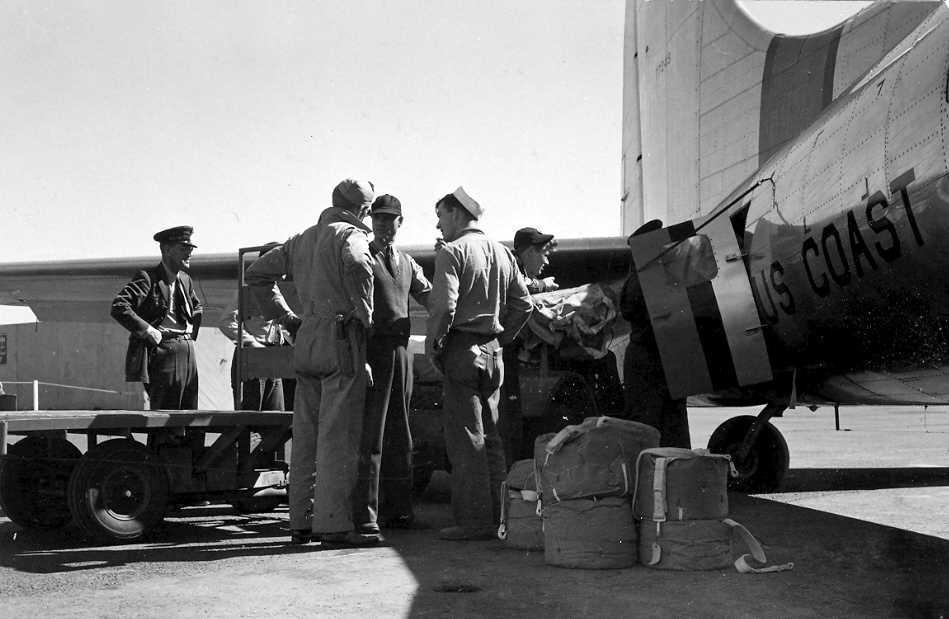 ABOVE: Emergency supplies for the survivors being loaded into USCG PB-1G 77249. BELOW: The supplies being parachuted to
the crash site. BELOW: HOS-1 Helicopter 23470 from CGAS
Brooklyn NY is reassembled. BELOW: Coast Guard and Army personnel
carry a survivor in a stokes litter from the
helipad to the medics BELOW: Ground personnel off-load an
ambulatory survivor from HOS-1 23470. BELOW: Loading a patient in a stokes
litter into a life raft for the trip out to the
PBY. BELOW: PBY-5A 48314, with survivors safely
aboard, leaves Gander Lake and heads for Gander
Airport.
|

